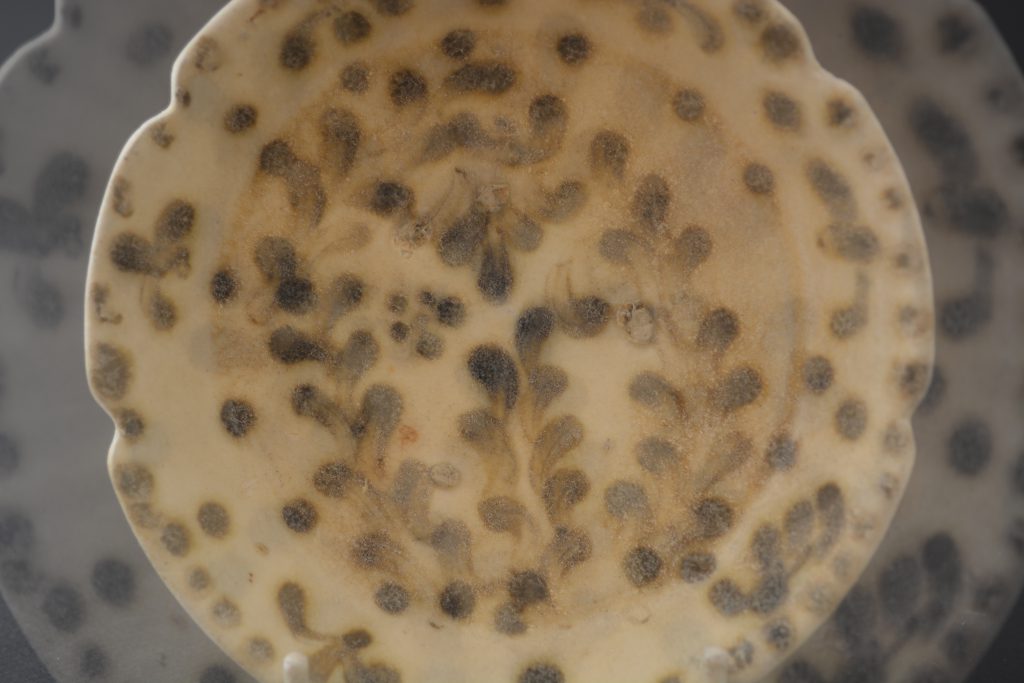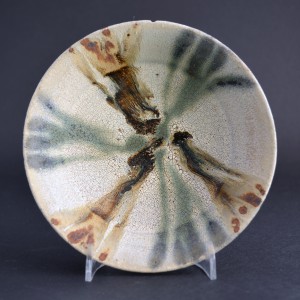
A Tang Stoneware Dish, Probably Changsha, 9th Century.
A Tang stoneware dish, probably Changsha ware, Hunan Province, 9th Century. The flower shaped form is decorated in the Western Asian style with plants and dots in iron-oxide.
SOLD
- Condition
- In good condition but as with allot of Changsha pottery the glaze is rather dry and semi-matte.
- Size
- Diameter : 13.1 cm (5 inches).
- Provenance
- A Private Collection of Early Chinese Ceramics c.1970-1990.
- Stock number
- 118
Information
Sancai Pottery :
Sancai (three colours) is a term used to describe low fired polychrome glazes consisting of three or sometimes four colours. These were predominately green, brown, yellow and cream. Typical Sancai pottery includes lead fluxed Tang wares.
A Rare Tang Changsha Bowl, Hunan Province, Early 9th Century. From a Shipwreck, Probably from the Belitung Wreck.
SOLD

Belitung Shipwreck :
The Belitung shipwreck (also known as the Tang or Batu Hitam Shipwreck). Another bowl from the Belitung shipwreck is inscribed with a date equivalent to 826, a carbon 14 analysis of the wreck also confirms a Tang date (618 – 907).
The Belitung shipwreck was found by fishermen off the Indonesian Island of Belitung in 1998. The German group, Seabed Explorations, purchased the location from the fishermen and began excavation under license in the latter part of the same year. It seems that the Belitung shipwreck is the only example of an ancient Arab ship ever found. The extensive hull remains were stitched together. Its location in Indonesian waters, and its cargo of Chinese ceramics, provide archaeological evidence for direct trade between the Western Indian Ocean and China in the first millennium, although this is subject to some speculation.






